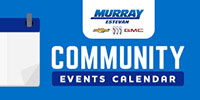STARS air ambulance was able to complete its first-ever neonatal transfer back in December, thanks to some new equipment.
A call came in from an expectant couple near Caronport, who needed help after their baby was delivered along the side of a highway.
STARS was able to get the Regina General Hospital's neo-natal unit out to the scene and bring them back.
Darcy McKay, the provincial director for Saskatchewan operations, says the new equipment helped them more safely transport an ice sled they use to for cases like these.
"The new equipment that we use is basically an interface that lets the ice sled come into the helicopter. It's a bit of a game-changer. The ice sled is very heavy. So it's about 300 pounds, believe it or not, and that ice sled kind of creates the environment where you want the neonate in, so the amount of heat, the amount of oxygen and light, which are really important for a premature baby."
McKay says that the equipment is expensive and is often custom-made.
"Everything comes with a cost of course. First of all, it has to be built and manufactured to you know fit into the helicopter and then it actually has to be approved by Transport Canada for its use. So it's safe to use, it's stable in the helicopter and of course, it's secured in the helicopter."
Those costs are covered by community donations which help to keep the helicopter in the sky.
"Your donation helps keep the helicopter in the air. We wouldn't be able to do these missions without the support of the communities, the industrial support, and the Saskatchewan government," said McKay, "Just the donors themselves that helped keep the helicopter in the sky."
Future development will be going towards STARS virtual care, which will allow physicians to see the patient through a video link before they arrive to the hospital.
McKay says that technology would also eventually find its way to EMS services in Saskatchewan and be especially helpful in rural communities.












